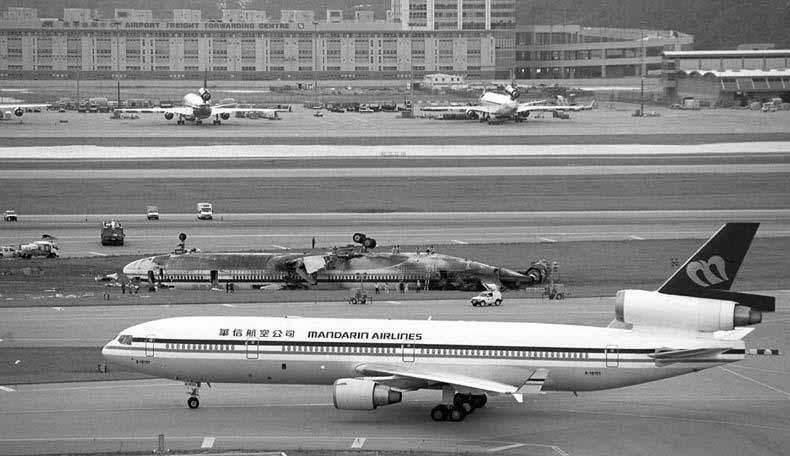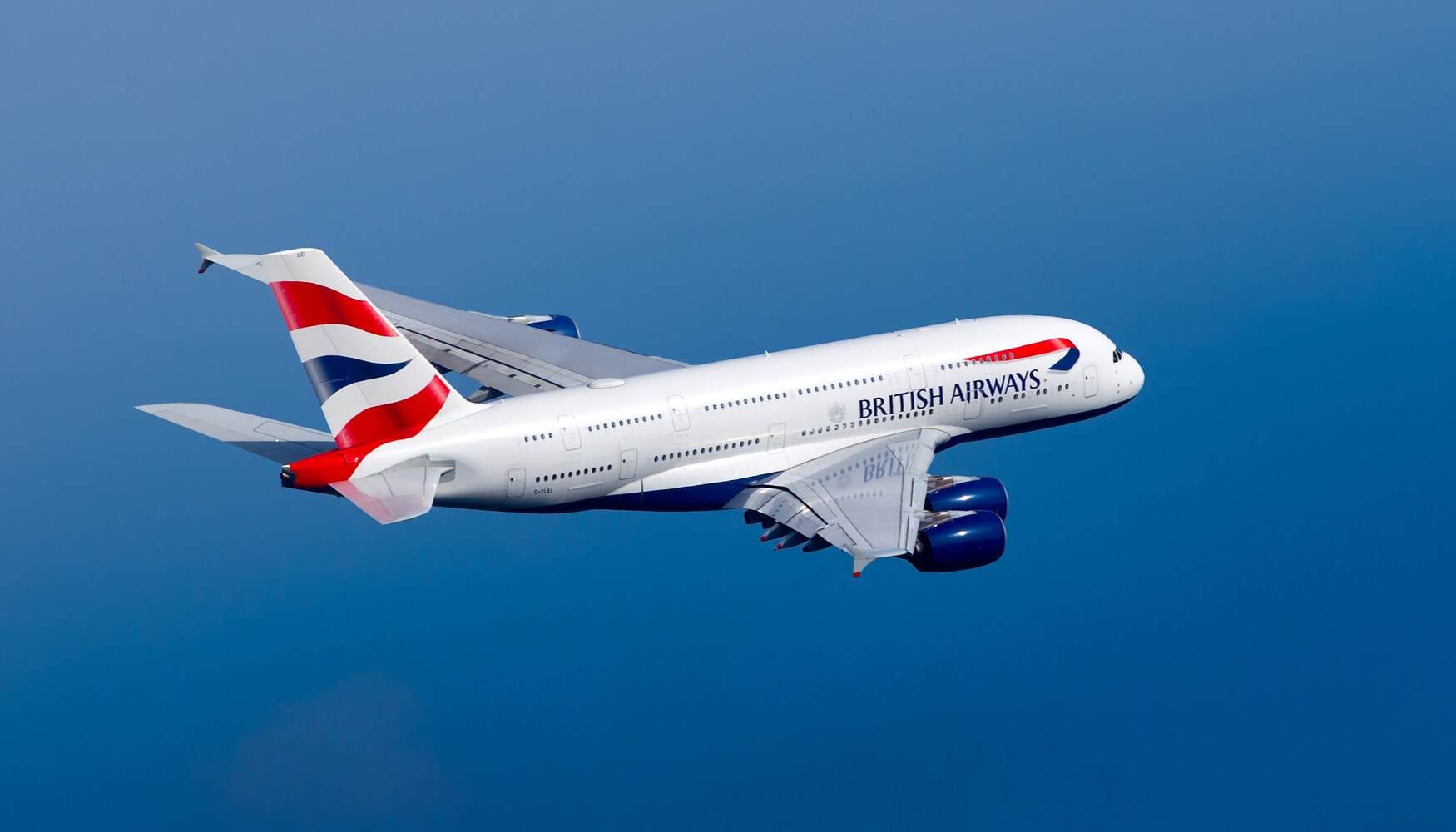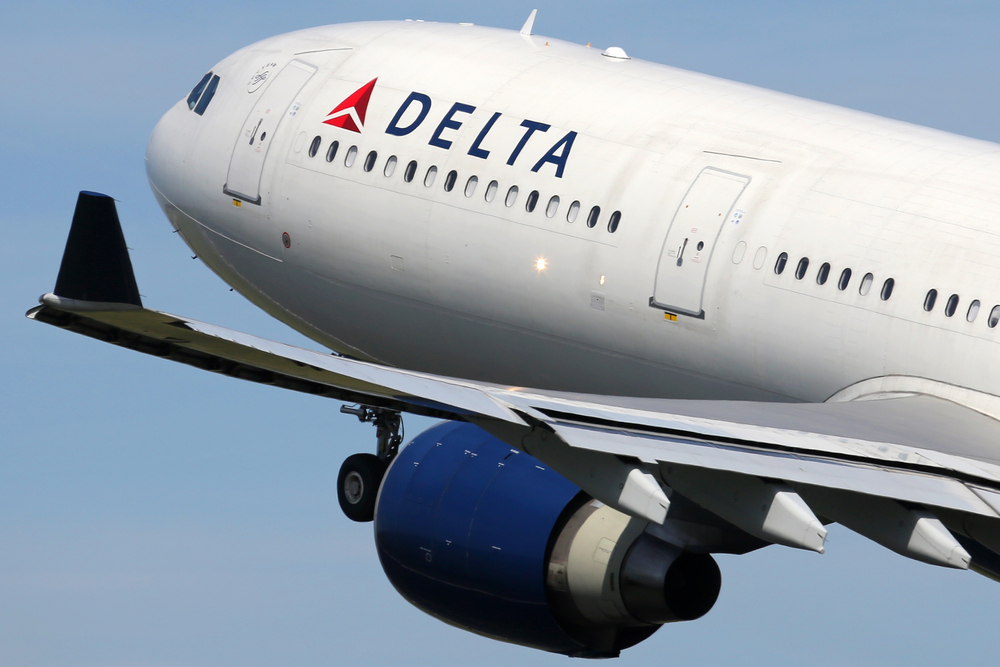What if You Saw THIS Out Your Window While Taxiing?

In the spirit of #TBT (“Throwback Thursday,” not Brazil’s Tabatinga Airport) FlyerTalk takes a look back at the events that helped shape modern aviation. Here are just a few moments from history that changed the face of the industry during the week of August 16.
August 16, 1987
Moments after taking off from Detroit Metropolitan Wayne County Airport (DTW) Northwest Airlines Flight 255 crashed just miles away from the airport. The McDonnell-Douglas MD-82 failed to take off due to wing flaps not being extended, making the official cause “failure to use the taxi checklist.”
Of the 156 souls aboard, all but one was lost — four-year-old Cecelia Cichan. Over 20 years after the accident, the sole survivor of the crash spoke about her experience for the first time.
August 17, 1989
In a journey that took just over 20 hours to complete, the Qantas City of Canberra, a Boeing 747, officially completed the world’s longest commercial flight from London to Sydney. Although the flight was technically a scheduled commercial flight, the 747 departed London with only 23 people onboard.
The historic flight covered over 9,700 nautical miles to set the record, beating the regularly scheduled flight record route (Singapore-Newark) by over 1,500 nautical miles.
In March 2015, the record-shattering aircraft was officially retired to an aviation museum in New South Wales.
August 18, 1911
The Royal Aircraft Factory S.E.1., an experimental aircraft piloted by a man who had received his pilot’s license only one day prior, crashed near Farnborough, England. The pilot ended up engaging in a spin before the crash, which killed him and destroyed the aircraft.
While the aircraft was not rebuilt, researchers at the British Army Balloon Factory went on to build the S.E.2., which lead to many aviation advances leading into World War I.
August 19, 1980
After receiving a warning of a fire in the cabin, the captain of Saudia Flight 163 declared an emergency and returned to Riyadh King Khalid International Airport (RUH). However, instead of stopping on the runway where firefighters were waiting, the aircraft exited the runway on a taxiway, forcing the staged first responders to catch up with the aircraft.
All 301 passengers onboard were killed in the incident, with the cause of death for most being smoke inhalation. The accident lead to the banning of butane stoves aboard aircraft, as well as the recommendation of using halomethane fire extinguishers.
August 20, 1963
British Aircraft Company celebrated the first flight of their newest commercial jet aircraft, the BAC One-Eleven. Intended for short-range flights, the first One-Eleven aircraft had a seating capacity of 79 and a range of 830 nautical miles.
The aircraft was an immediate success around the world and saw extensive service with American Airlines, British Airways, Ryanair and US Air.
August 21, 1995
Atlantic Southeast Airlines Flight 529 became the second fatal Embraer Brasilia crash due to flawed aircraft propellers. The flight came to an end in Carroll County, Ga. while operating regularly scheduled service from Hartsfield-Jackson Atlanta International Airport (ATL) to Gulfport-Biloxi International Airport (GPT).
Nine people, including the captain, died as a result of a fire after the crash landing. Both first officer Matt Warmerdam and flight attendant Robin Fech were credited as heroes for their part in bringing the aircraft down and saving lives after the accident.
August 22, 1999
While trying to land during a typhoon, China Airlines Flight 642 crashed at Hong Kong International Airport (HKG) after coming down too hard on the right landing gear. This caused the right engine to make contact with the ground, severing the right wing and ultimately flipping the McDonnell-Douglas MD-11.
Of the 300 passengers on the aircraft, only three were killed, with over 200 suffering some form of injury. The cause of the incident was determined to be pilot error.
[Photo: Jerry Yau via AirDisasters.com]























Wow! This makes me thankful to be flying in the present, and greatly appreciative for all of the advances and innovations in flight safety! I wonder how things will change in the next several decades, as technology continues to rocket forward...
Surprised you left out AC797, 6/2/83, which led, among other changes, to smoke detectors and non-smoking flights.